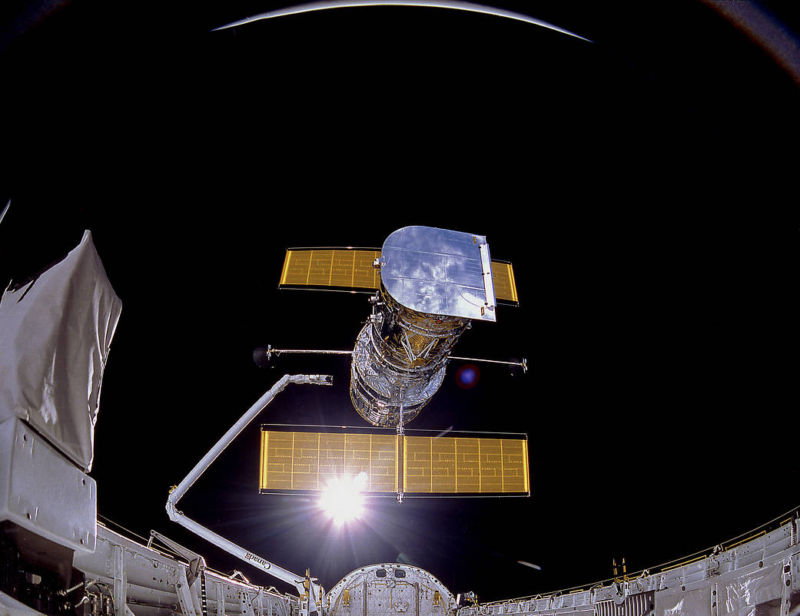
NASA placed its venerable Hubble Space Telescope into a “safe mode” on Friday evening because of gyroscope problems, the space agency confirmed Monday. Although science operations are expected to resume fairly soon, the current issues raise concerns about the future of the invaluable scientific instrument.
Ground operators put the telescope into this stable configuration after one of the three active gyros that help point the telescope failed. According to NASA, the gyro that failed last week had been exhibiting end-of-life behavior for about a year, and its failure was not unexpected. What happens next is a little complex and requires some explanation.
The Hubble telescope has three pairs of two gyroscopes, with each pair consisting of a primary and back-up gyroscope. Moreover, in each pair, one of the gyroscopes is of an “old” design, while the other is an “enhanced” or newer design intended to last for a longer period of time.
The six gyros on the Hubble were replaced in 2009 during the final servicing mission to the instrument by NASA’s space shuttle. With the shuttle now retired, NASA has no present capability to send humans to repair the telescope. The agency, in fact, does not have any spacecraft with an airlock and robotic arm that would be ready within the next few years. This is one reason why NASA sought to install three enhanced gyros on the telescope in 2009.
Down to two gyros
Before the last week, two of the old-design gyros had failed. In addition, one of the enhanced gyros had been acting up, so it had been taken out of service in favor of the third and final old-design one. After this third and final older-type gyroscope failed, technicians have tried to bring the balky enhanced gyro back online.
However, according to NASA, after the third enhanced gyro was powered back up, it did not perform “at the level required for operations.” Thus, at this time, Hubble has two functional gyroscopes. The space agency still hopes that it can recover the third enhanced gyroscope and resume normal science operations.
If this is not possible, then the agency will begin operating the telescope using a single gyroscope with the other working gyroscope held in reserve to preserve the overall lifetime of the telescope. NASA said that, while this option offers less sky coverage at any particular time, there is relatively limited impact on Hubble’s overall scientific capabilities.
Launched in April 1990, the Hubble telescope has provided observations of everything from Jupiter’s moons to exoplanets to the edge of the known universe. During its lifetime, the instrument has literally discovered the age, size, and fate of our universe. While the James Webb Space Telescope, due to be launched in 2021, will replace some of the Hubble’s functions, it will not be able to duplicate its stunning optical images.
























